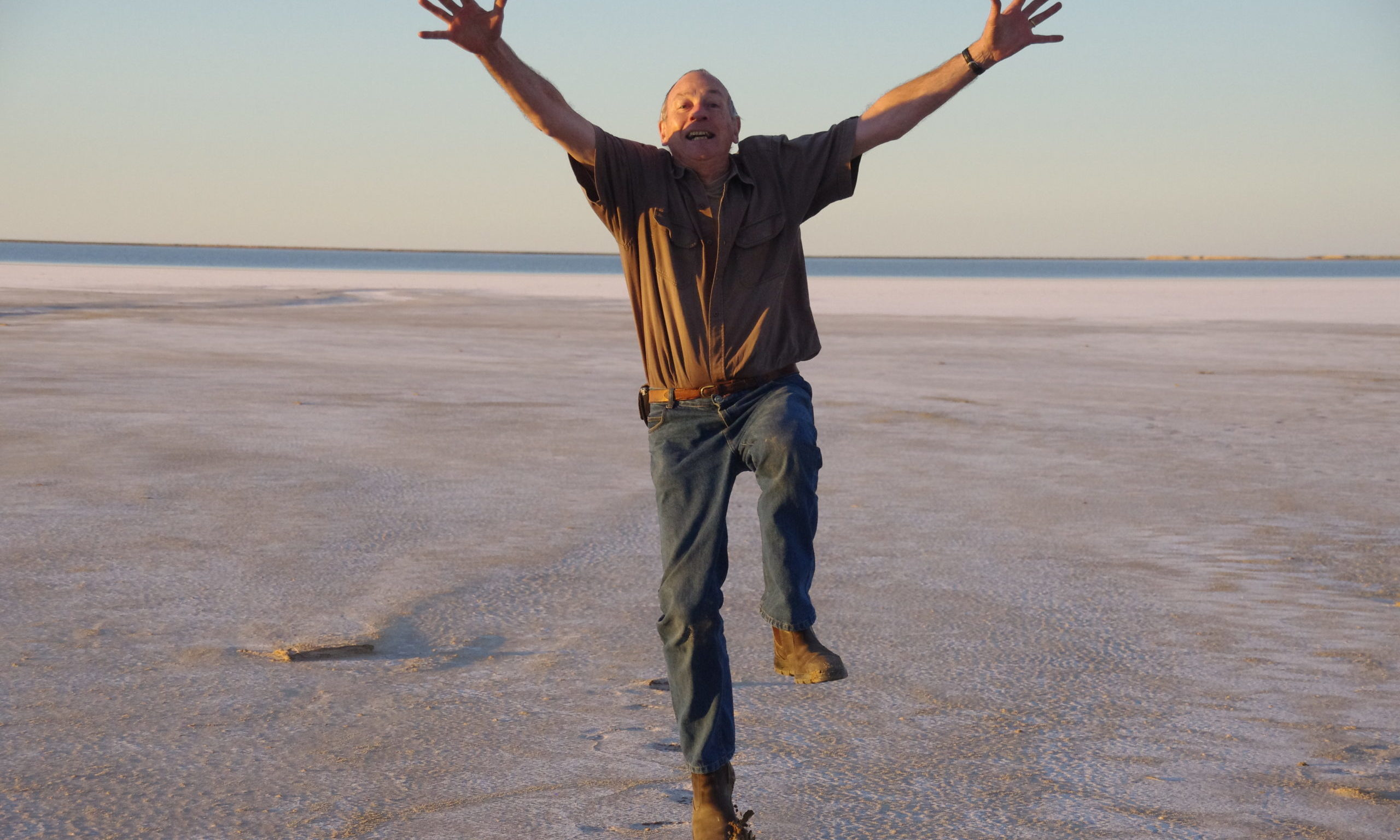‘Total blinking shock’ of leukaemia

It was during a Saturday afternoon snooze when Les Sprague, 71, got a phone call and the “total blinking shock” of being told he could have leukaemia.
He had been only weeks away from heading off to Vietnam with his wife, Paula, when he was overcome with a feeling of “absolute tiredness”. He had nosebleeds, hot flushes and was losing weight as well.
“I felt pretty exhausted the whole time and couldn’t understand why,” said Les, a visual artist, now aged 75.
“Obviously I couldn’t go to Vietnam. I had to do something.”
Thinking it was a passing virus Les had a blood test on a Friday.
Leukaemia diagnosis
“To my horror, a pathologist rang from Melbourne the next afternoon while I was lying down.
“He said ‘you’ve got some very low blood counts and better get to the emergency department. It looks like you’ve got leukaemia.
“‘Get an ambulance, you can’t drive’, he said, in case I had an accident because any sort of bleeding could be dangerous,” explained Les, who lives on a small farm on the edge of the forest at Enfield, near Ballarat (VIC).
“I drove. It was only 25km. I was terribly upset and when I rang my wife who was coming home from a work event, I could hardly even breathe the word ‘leukaemia’ because I knew what leukaemia was.”
Les spent that night in hospital at Ballarat and the next day was transferred by ambulance to a Melbourne hospital. After a range of diagnostic and stress tests, he was told ‘if we don’t do anything, you’ve got a life expectancy of two to three weeks!’.
“The haematologist also said, ‘let’s hope and pray you’ve got inversion 16’, which meant nothing to me at the time. It’s a chromosomal thing, which means you respond to a certain cytotoxic drug and that’s a good thing, and miraculously that’s what I had,” said Les.
“Those first hours and days were totally disorientating and de-stabilising. There was shock and also the understanding that my death would mean the tragic loss of the relationship between my wife and I.”
Dealing with treatment
Paula immediately took time off work as a teacher to be with Les “for as long as it took” which turned out to be four months, and the Spragues remained in Melbourne while Les had four cycles of intensive treatment.
“As we lived way up in the provinces, we were hardly likely to go back and forwards to Melbourne every day,” said Les.
“Paula was put in touch with the Leukaemia Foundation and they quickly found a unit and made that available to us for the entire time of my treatment.
“It was a haven. Paula would go home at the end of each day and just collapse. It was very unsettling for her to have me with such a debilitating disease so suddenly,” he said.
“The unit was comfortable, close, and I was able to go there between cycles of chemotherapy, to recover before going back to hospital.”
Despite his fitness, and being told he had the body of a 60-65 year old, Les was too old to have a stem cell transplant. So his haematologist advised that Les was to get ‘the strongest dose without actually killing him’.
“And it worked,” said Les.
“The first treatment nearly killed me and was terribly painful – it was touch and go.”
Les believes he survived acute myeloid leukaemia by finding out everything he could about his blood cancer and not “feeling like a victim”.
“I saw people lying in hospital passively copping whatever was going to be given to them, and we didn’t do that. We got ourselves in a position where we could be active members of the team treating this thing.
“I made sure I knew the names of all the nurses, the registrars, the cleaners, everyone who had anything to do with us and that made it easier for them to see me not just as a patient but as a person,” said Les.
During his second cycle of chemotherapy, Les got a serious infection. Initially thought to be a haemorrhoid, it turned out to be an infection in his blood, from his bowel, because his immune system had failed.
“It was my insistence and Paula’s that they properly diagnose this and I think that turned the corner for me and helped save my life. I had to have surgery to fix it.
“I was as weak as a kitten during treatment but luckily I keep pretty fit and that was important, but there were days when I thought, nah, I’m not going to get through this,” said Les.
Life after cancer
He finished his treatment and went home in July 2014.
“I’ve had no more chemo or anything since then. Just close surveillance,” said Les, who has got on with his life, continuing his work as an artist along with the “millions of jobs that have to be done even on a small farm”.
“The Leukaemia Foundation was so good to us,” said Les.
“I thought it would be good to do something for them and to raise awareness of what the Leukaemia Foundation does for people, particularly in regional Australia, to make their treatment more palatable or easier.
“I’m an artist and people like art. We decided to say ‘thank you’ in a way that meant something to us.”
Les held a sell-out exhibition of his drawings, paintings, etchings and photographs, predominantly of the outback and covering his work over 30 years. He also published a calendar, with help from a team of enthusiastic supporters, and the Spragues donated a generous percentage of sales from both to the Leukaemia Foundation.
This story features as part of Blood Cancer Awareness Month 2019, helping to raise awareness of every blood cancer.